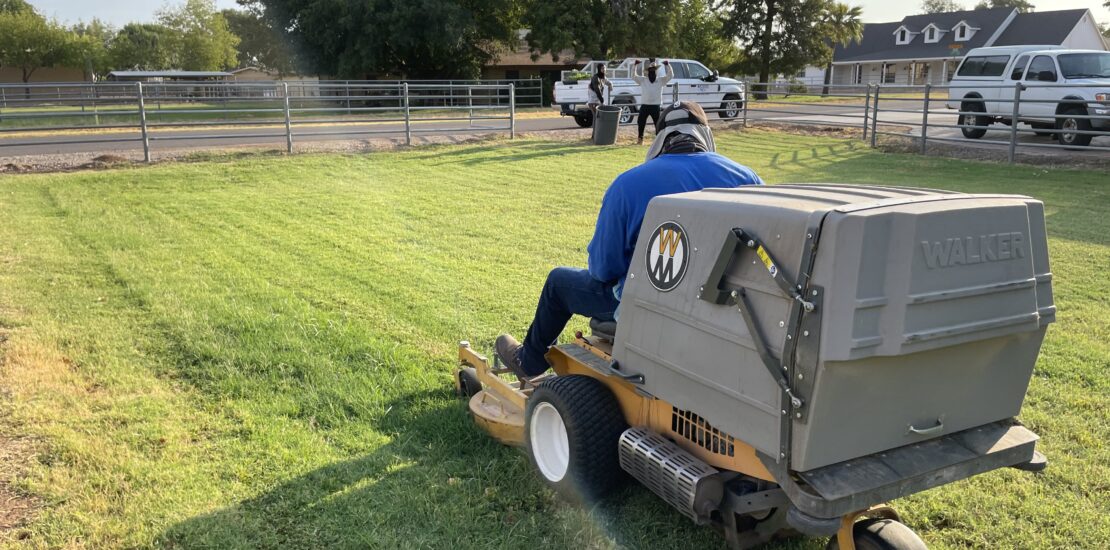- October 10, 2024
- Posted by: Justin Pauling
- Category: Uncategorized

Maintaining a beautiful, healthy landscape in Arizona’s unique desert climate requires a specific understanding of local growing seasons, especially when it comes to fertilization. Fertilizing at the right time with the right products can make a significant difference in the vibrancy and longevity of your plants, lawns, and trees. This guide will walk you through the best times to fertilize, focusing on Arizona’s seasons, and provide tips on selecting the right fertilizers to ensure your landscape thrives year-round.
Understanding Arizona’s Growing Seasons
Arizona’s climate offers a mix of extremes, with hot summers, mild winters, and two distinct growing seasons—spring and fall. These fluctuations impact plant growth and soil nutrient availability, meaning your fertilization schedule should be tailored to each season to maximize results. Unlike cooler climates, Arizona’s desert environment requires strategic timing and the use of specialized products to prevent plant stress and nutrient loss.
Fertilizing by Season
Spring: Reviving Your Landscape After Winter
As temperatures start to warm up in March, plants come out of their winter dormancy and require a nutrient boost to fuel new growth. This is the time to apply a balanced, slow-release fertilizer to your lawn, trees, and shrubs to provide essential nutrients like nitrogen, phosphorus, and potassium. Fertilizing in early spring helps plants establish strong root systems, which will support them through the heat of summer.
- Pro tip: For desert plants like cacti and succulents, opt for a low-nitrogen fertilizer to avoid overgrowth.
Summer: Fertilization Strategies During Intense Heat
Arizona summers can be scorching, with temperatures regularly exceeding 100°F. Fertilizing during this time requires caution—applying too much fertilizer or the wrong kind can scorch your plants or lead to nutrient leaching. It’s best to limit fertilization in the hottest months (June through August) unless necessary for specific plants like fruit trees, which benefit from light feeding during their growing period.
- When to fertilize: If you fertilize in the summer, do so early in the morning or late in the evening to avoid intense heat.
- Avoid overwatering: Fertilizing just before a monsoon or heavy watering can cause nutrients to wash away.
Fall: Preparing for the Cooler Months and Lawn Overseeding
Fall is an excellent time for overseeding lawns with winter ryegrass and giving your landscape one last fertilization boost before the cooler weather. Fertilizing in early October can help warm-season grasses and desert plants store nutrients for the winter and promote a lush, green lawn that lasts through the colder months.
- Tip for overseeding: Use a phosphorus-rich fertilizer to encourage root development when planting new grass.
- Fall fertilization for trees and shrubs: Focus on potassium-rich fertilizers to support winter hardiness.
Winter: Caring for Winter Gardens and Cold-Tolerant Plants
In Arizona, winter is relatively mild, and many cold-tolerant plants like winter vegetables, evergreens, and certain desert species thrive. Fertilizing winter gardens with a balanced organic fertilizer in early winter can enhance their growth. For established landscapes, a light application of fertilizer can keep lawns and plants healthy without encouraging too much new growth during colder months.
- Key winter tip: For plants that remain active, slow-release organic fertilizers are best to avoid over-fertilizing.
Choosing the Right Fertilizer for Arizona Landscapes
Selecting the right type of fertilizer is just as important as knowing when to apply it. Arizona’s desert soil often lacks key nutrients, so it’s crucial to choose a fertilizer that suits the specific needs of your plants. In addition to maintaining a healthy landscape through proper fertilization, it’s also worth considering the overall expenses involved in professional landscaping. If you’re wondering about these costs, be sure to check out our blog on how much does landscape design cost to help you plan your budget more effectively.
- Organic vs. Synthetic: Organic fertilizers, made from natural materials, are ideal for long-term soil health and sustainability. They release nutrients slowly and improve soil structure. Synthetic fertilizers, while fast-acting, should be applied carefully to avoid over-fertilization and potential plant burn.
- Desert-friendly products: Look for products formulated specifically for desert landscapes, such as those that offer micronutrients like iron and zinc, which can be depleted in Arizona soils.
Common Fertilization Mistakes to Avoid
Over-fertilizing: More fertilizer doesn’t always mean better results. Over-fertilizing can harm your plants, leading to root burn and nutrient imbalances.
Wrong timing: Fertilizing at the wrong time of year, particularly in the intense heat of summer, can stress plants or cause nutrient runoff.
Achieving Year-Round Vibrancy with Proper Fertilization in Arizona
Fertilization is a key component of maintaining a thriving Arizona landscape, but it requires an understanding of the unique local climate and soil conditions. By fertilizing at the right times and using the appropriate products, you can help your plants, lawns, and trees stay vibrant throughout the year. If you’re unsure about your fertilization strategy, our team at Kevens Landscape Design is here to provide expert advice and professional fertilization services to keep your landscape in top shape.
